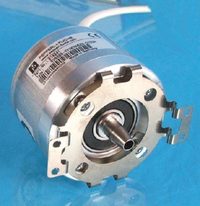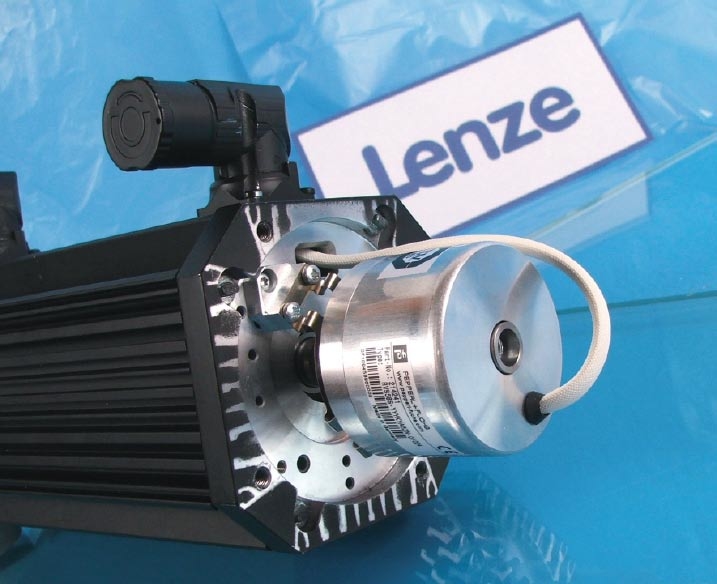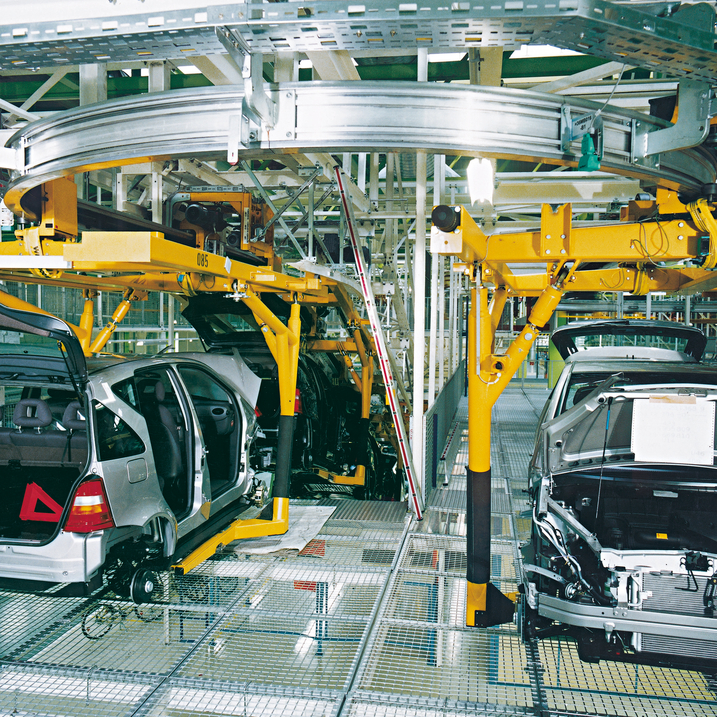Rotary Encoders Slow the Process to Increase Efficiency
Hit the Brakes and Win - Safe encoders and drives form a reliable team

Rotary encoders from Pepperl+Fuchs: planned from the ground up to take safety-relevant considerations into account
It may sound paradoxical, but there are certain situations in the production process where braking gains time. Machine shutdown processes cost time and money. Setting the system to a slower speed actually can increase efficiency. Functionally safe rotary encoders combined with drive converters reliably achieve this objective.
The printing rollers on printing machines must be cleaned at regular intervals. The cleaning process can proceed more efficiently if the system does not have to be shut down but instead can continue operating at a slower speed. The system operator can prevent downtime and improve efficiency as a result. Functionally safe rotary encoders from Pepperl+Fuchs combined with the safety module for Lenze drive converters achieve this objective.
Time is money
Machines are run at high speeds in order to optimize production costs; but increased speed also leads to increased risk. Important prerequisites to prevent this risk are quick machine stops and short reaction times. According to the Machine Directive and relevant safety regulations for health and safety at the workplace, even brief lapses in attention must not result in shearing, crushing and impact injuries. High-powered drives are especially important. But it is not just classic safety considerations that, when properly implemented, lead to productivity increases and cost optimization. Architecture also leads to savings potential by reducing external safety components. This is implemented using a drive-based safety concept, where safety-relevant functions are integrated into the drive control.
Effective as a team
The preferred use of rotary encoders is to monitor rotating or swiveling components in drive systems. The range of functionally-safe rotary encoders from Pepperl+Fuchs includes sensors that have been designed for safety-relevant considerations. These sensors are TÜV-approved for certification in the highest safety categories such as SIL3 as per IEC 61508 or PL e as per EN ISO 13849-1.
Interaction with the actual safety module of the drive converter is crucial: the rotary encoder from Pepperl+Fuchs and the safety module of the drive converter from Lenze are one such example of a compatible arrangement that enables the highest safety categories in drive technology. The scope of the categories applies here to the applicable EU standards listed under the new Machine Directive 2006/42/EC, as well as functions according to IEC 61800-5-2 applied to drive technology.

Safety-relevant drive functions guarantee safe, economical control
Close to the action
In order to react quickly and appropriately, the safe rotary encoder from Pepperl+Fuchs is mounted directly onto the drive shaft of the Lenze induction motor. Directly linked to the motor, the information detected can be transferred in real time to the safety module through a sine/cosine interface with no additional cables. The safe lead breakage detection system serves to transmit an error condition to meet requirements in the safety chain.
In addition to safety aspects, the encoder is adapted to the mechanical, electrical and environmental demands in drive technology. By extending the temperature range to 115 °C and the vibration resistance to 20 g, it is very sturdy and meets the tough demands of varied industrial applications.
A step worth taking
While meeting the requirements made by the new Machine Directive 2006/42/EC, technological innovations such as drive-based safety minimize drive-system costs and optimize productivity through integrated functional safety. High safety categories can only be reached with a complete safety chain of specially developed components.
Against this backdrop, safe rotary encoders with functional safety take on a new significance. Modern sensors that easily integrate into drive systems and completely fulfill all the safety-function requirements of modern drive controls make it possible to achieve high safety categories.

Drive-based safety not only improves safety, but also reduces system costs while simultaneously increasing productivity





 +36 88 545 902
+36 88 545 902